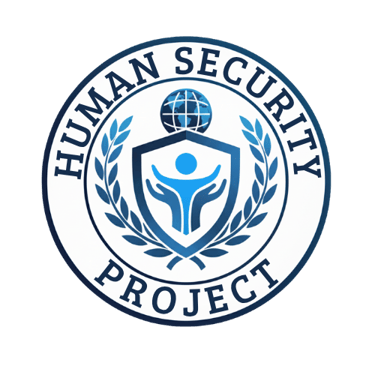What gets lost when atrocity footage becomes shareable content?
Rosie Berman
5/12/20254 min read


Since Israel renewed its assault on Gaza, which Amnesty International, Human Rights Watch, and several United Nations Special Rapporteurs have labeled genocide, social media feeds have once again filled with gruesome and heartbreaking footage of dead and dying children, dismembered bodies, and loved ones overcome by grief.
The use of social media to raise awareness of atrocities isn’t new. Beginning in the early 2010s, survivors, witnesses, and citizen journalists from Syria, Ukraine, Sudan, and other conflict zones took to the Internet to expose and document the horrors they experienced, under the assumption that eyewitness evidence would mobilize the international community to act.
Widely available atrocity footage has not prompted the meaningful international action that documenters hoped for. However, unprecedented access to footage has shaped public opinion, promoted solidarity with targeted communities, and galvanized movements for prevention and accountability. The availability of footage additionally enables journalists and activists to undercut official denials by perpetrators. Organizations such as Bellingcat, the Centre for Information Resilience, Airwars, and Mnemonic archive and analyze open-source footage to investigate possible atrocities, identify perpetrators and weapons used, and build cases for future prosecutions. International mechanisms such as the Independent International Fact-Finding Mission for the Sudan, the Independent Investigative Mechanism for Myanmar, and the Independent International Commission of Inquiry on the Syrian Arab Republic have utilized atrocity footage to perform similar work at the United Nations level.
But as I scroll through my own social media feeds, where a video depicting a father filming the death of his own daughter might sit between a cute cat meme and a rant about people who listen to music without headphones on public transit, I can’t help but feel profound discomfort.
Content-Ification
Today’s Internet is driven by the production, consumption, and circulation of content. Algorithms promote the content that gets the most engagement. The content that gets the most engagement is often the content that generates the strongest emotions. The grief, horror, and rage that atrocity footage produces play into this dynamic, regardless of the intentions of the sharers.
In addition, a culture has emerged on social justice-oriented corners of the Internet where users must demonstrate their outrage by consuming and sharing traumatizing content. Users who do not partake are shamed for “passively standing by” and their “silence” considered evidence of complicity.
In this environment of content-ification and ritualized, compulsory sharing, I fear that social media has transformed the worst moments of our fellow human beings’ lives into a spectacle for the consumption and moral edification of users thousands of miles away. I worry that the need to feel vindicated, especially when our governments play a role in the violence, has superseded respect for human dignity.
Prioritizing Dignity And Humanity
Atrocity footage will continue to circulate on social media. Because of the utility of this footage in exposing atrocities, galvanizing public outcry, and providing key evidence against perpetrators, advocating for an outright ban would be irresponsible. Instead, we as human security practitioners should take the lead in modeling an approach to interacting with online atrocity footage that prioritizes the dignity and humanity of victims and survivors. Here’s what I think this approach might look like:
Unless it is explicitly your job to watch, you don’t have to watch. Human Security, as we know, is a broad field. Not every practitioner will need to engage with atrocity footage as part of their job. For practitioners who do, guides like this one from Bellingcat exist to support individuals as they navigate and mitigate the risks of vicarious trauma. The Berkeley Protocol on Digital Open Source Investigations also provides information on psychological safety for practitioners.
If the functions of your job do not require you to view atrocity footage, you can give yourself permission not to watch. The decision to avoid repeated exposure to traumatizing material does not mean you have chosen to ignore the carnage. Instead, I encourage you to recognize your decision not to watch as a choice to protect yourself from vicarious trauma and burnout, so you can stay committed to the work for the long haul.
Share reporting and calls to action, not raw footage. Social media is a valuable tool for sharing information about mass atrocities and mobilizing others to take action. When sharing, I recommend sharing reports from credible investigators who have already done the work of viewing and analyzing. Sharing reports rather than the raw footage provides contextualized and actionable information about an ongoing atrocity without feeding the social media processes that transform human suffering and death into spectacles for consumption.
At the same time, situations may arise where sharing raw footage is the only way to raise awareness of an emerging atrocity. In these situations, I recommend contextualizing the footage in a post or caption, disabling autoplay if the platform allows, and providing a sensitive content warning.
The Internet allows individuals to bear witness to the worst humanity can do to one another in a manner unprecedented in history. Promoting calls to action can help all of us feel less helpless in the face of the deluge of horror social media exposes us to every day. Whether you’re sharing information about an upcoming protest, a script for calling elected officials, or a donation link to a humanitarian organization providing lifesaving aid, using social media to mobilize others allows you to exercise moral agency without risking sacrificing the dignity of others to the viral outrage machine.
Rosie Berman (she/her) is a researcher and writer based in Washington, D.C. She's worked across the nongovernmental sector and in Congress, with a primary focus on human rights, the protection of civilians, and U.S. foreign policy. Rosie holds a Master of Arts in Law and Diplomacy from the Fletcher School at Tufts University, where she studied Human Security and International Negotiations and Conflict Resolution. She earned a Bachelor of Arts in Political Science from Clark University. You can find her on LinkedIn and Bluesky. All opinions are her own.
Human Security Project
Delivering bold, actionable interventions to prevent violence, protect people, and build human security.
Connect
Engage
© 2025. All rights reserved.
